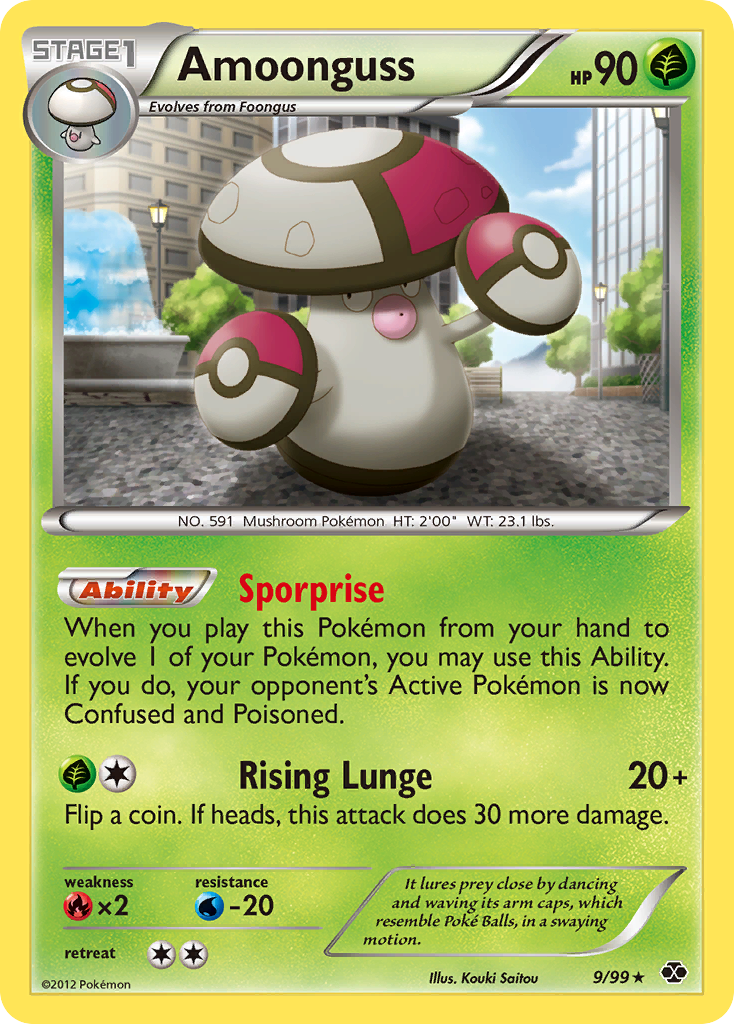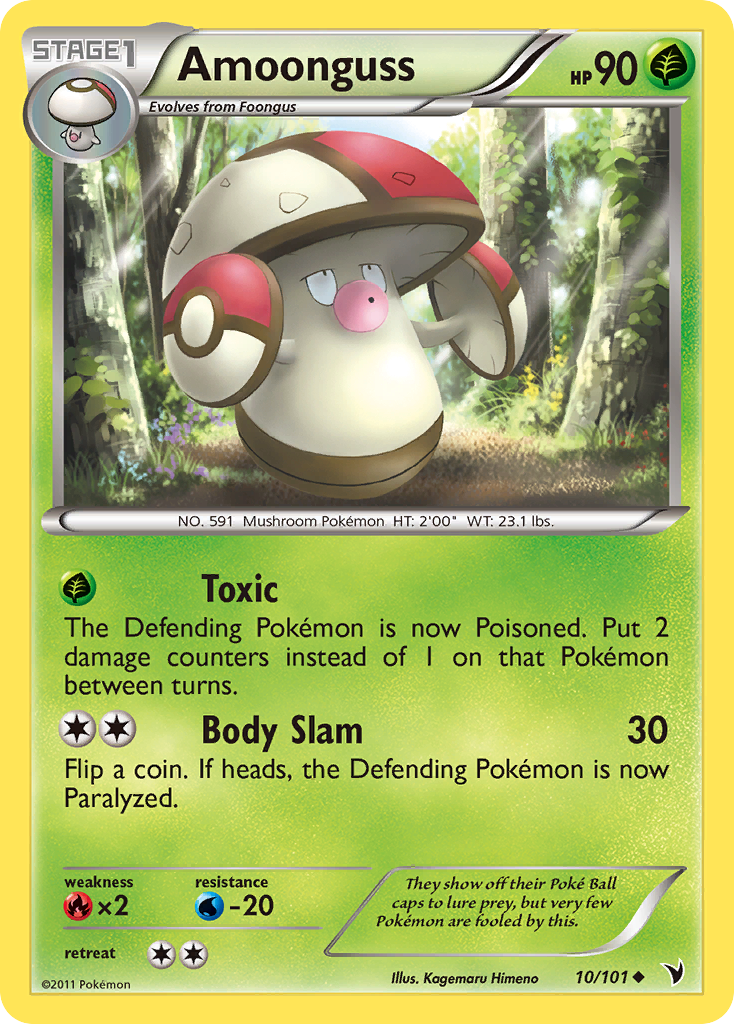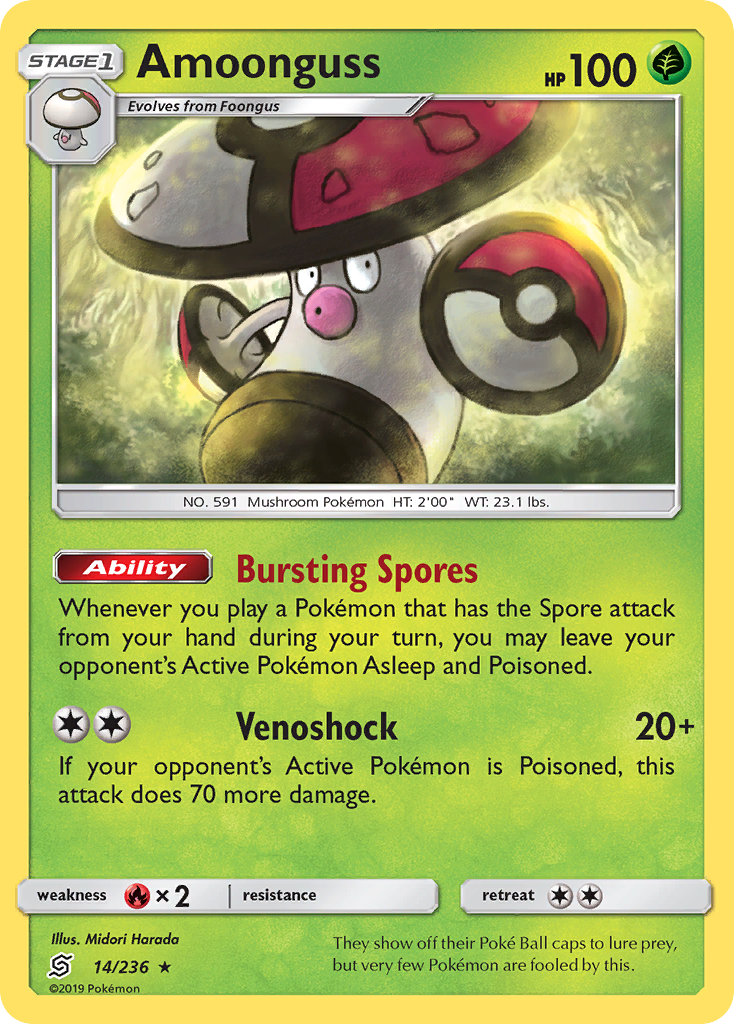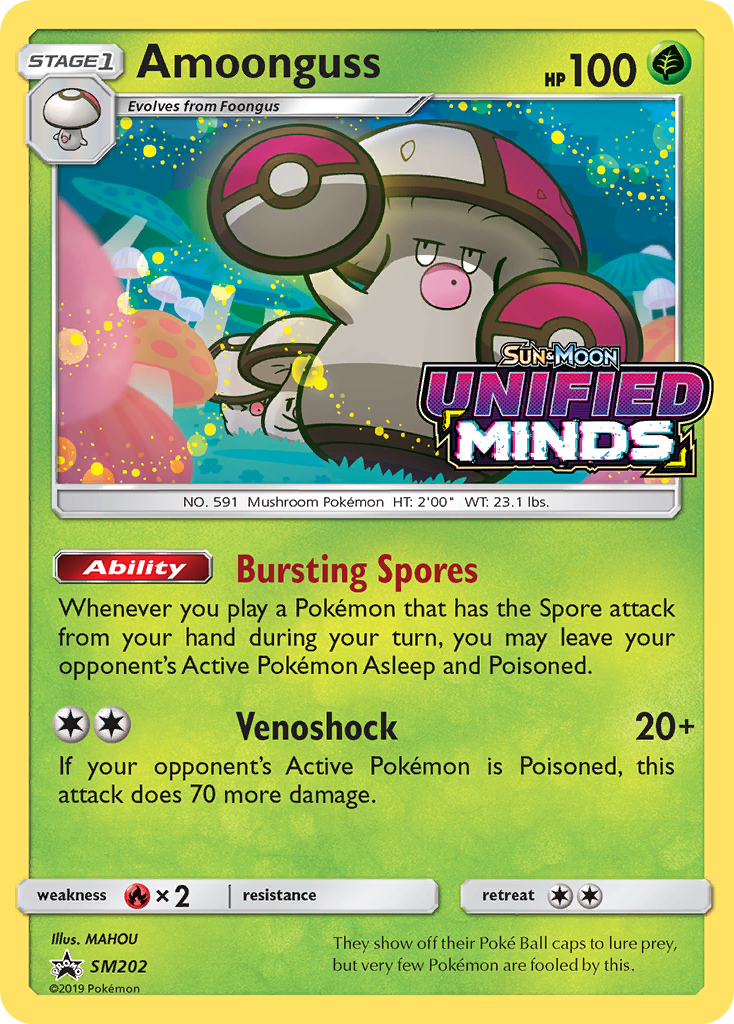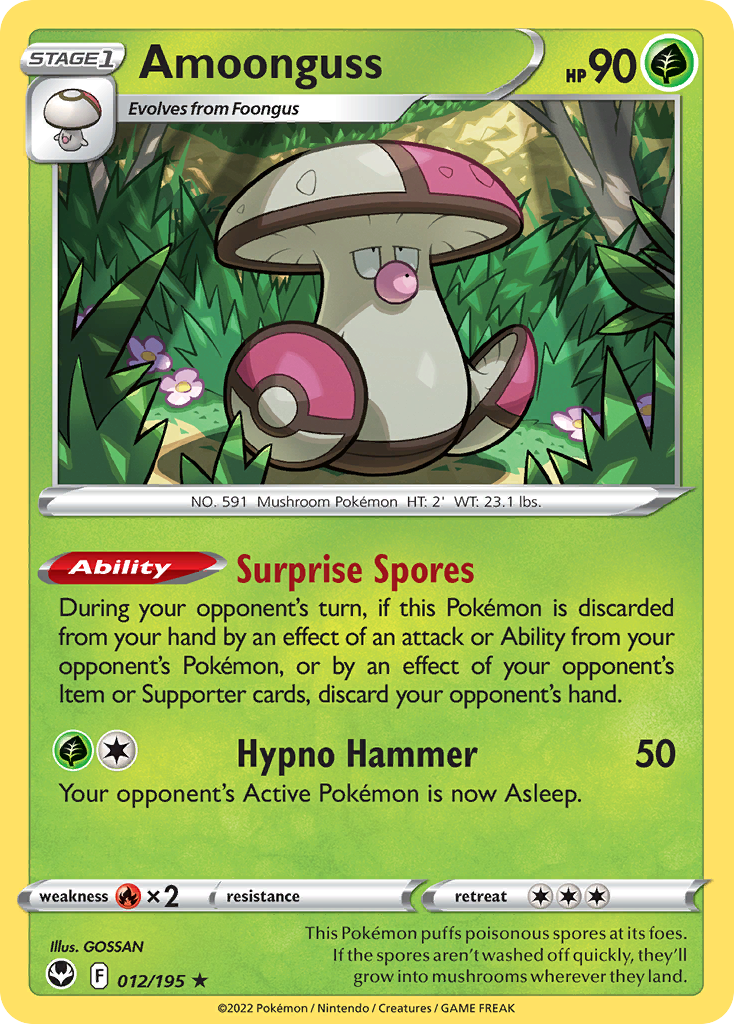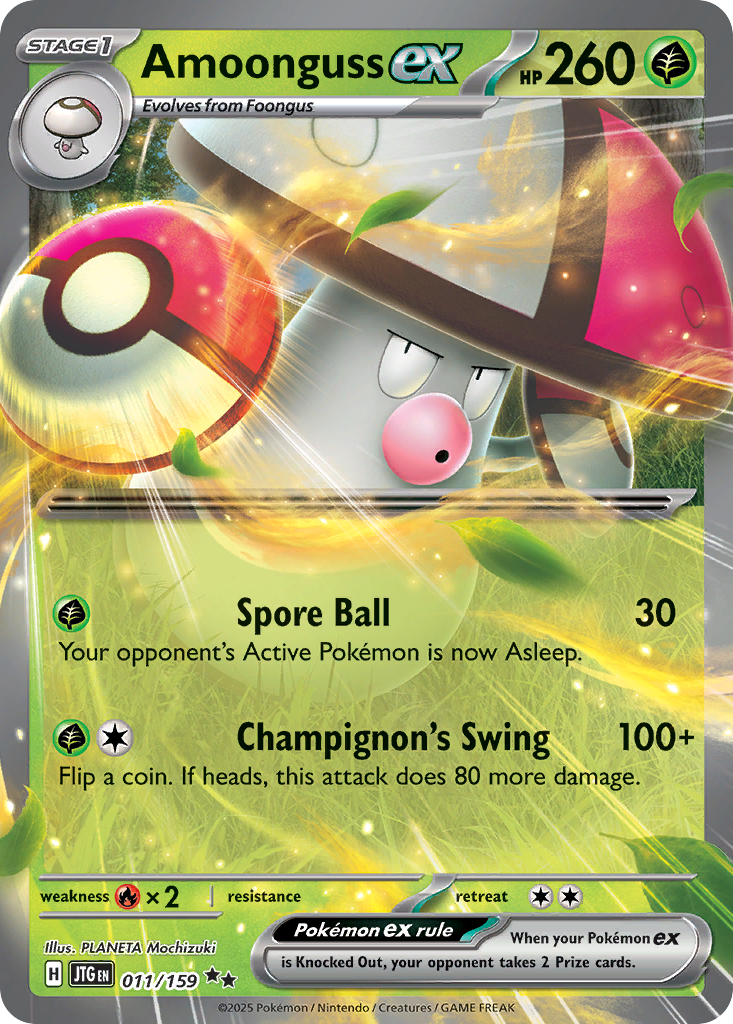Amoonguss
Mushroom Pokémon #591- 114HP
- 85Attack
- 70Defense
- 85S-Atk
- 80S-Def
- 30Speed
Pokédex • Pokémon #591 • Amoonguss
Pokémon Description
This Pokémon puffs poisonous spores at its foes. If the spores aren’t washed off quickly, they’ll grow into mushrooms wherever they land.
Amoonguss generally doesn’t move much. It tends to stand still near Poké Balls that have been dropped on the ground.
Evolutions
Pokémon Details
- Height2' 0''
- Weight23.1 lbs.
- GenderMale or Female
Abilities
Effect-SporeWhenever a move makes contact with this Pokémon, the move's user has a 30% chance of being paralyzed, poisoned, or put to sleep, chosen at random. Nothing is done to compensate if the move's user is immune to one of these ailments; there is simply a lower chance that the move's user will be affected.
Hidden Abilities
RegeneratorThis Pokémon regains 1/3 of its maximum HP when it is switched out for another Pokémon under any circumstances other than having fainted. This ability does not take effect when a battle ends.

